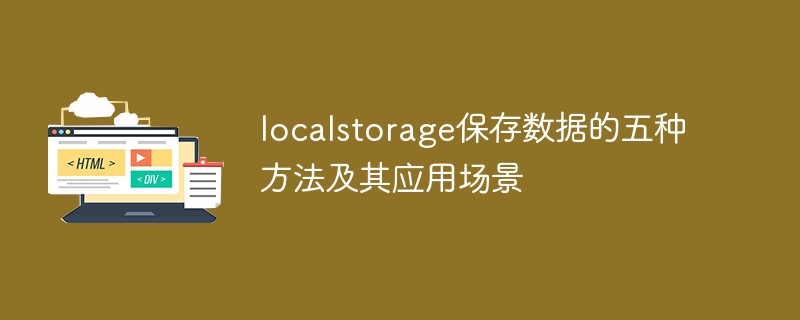

Five methods of localstorage saving data and their application scenarios, specific code examples are required
In front-end development, we often need to save some user data so that it can be used in Users can quickly load and use it the next time they visit. Using localstorage is a concise and efficient way to save this data. This article will introduce five methods of using localstorage to save data and provide specific code examples.
// 存储用户名
localStorage.setItem('username', 'John');In this example, we use the setItem method to store the data with the key name 'username' and the key value 'John' into localstorage.
// 存储用户信息
var user = { name: 'John', age: 25, isAdmin: true };
localStorage.setItem('user', JSON.stringify(user));In this example, we convert the user information object into a JSON string and store it in localstorage with the key name 'user' s position.
// 取出用户名
var username = localStorage.getItem('username');
console.log(username); // 输出: JohnIn this example, we use the getItem method to retrieve the data with the key name 'username' and assign it to the variable username.
// 更新用户名
localStorage.setItem('username', 'Tom');
var updatedUsername = localStorage.getItem('username');
console.log(updatedUsername); // 输出: TomIn this example, we first use the setItem method to update the data with the key name 'username' to 'Tom', and then use the getItem method to retrieve it. Updated data and assign it to the variable updatedUsername.
// 删除用户名
localStorage.removeItem('username');
var deletedUsername = localStorage.getItem('username');
console.log(deletedUsername); // 输出: nullIn this example, we use the removeItem method to delete the data with the key name 'username' from localstorage, and then use the getItem method to retrieve the deleted data. data and assign it to the variable deletedUsername. Since the data was deleted, the output result is null.
Depending on the specific application scenario, we can choose one or more of the above five methods to save data. For example, we can use the second method to save the user's login information, the first method to save the user's personalized settings, the fourth method to update the user's shopping cart information, and so on. In short, localstorage, as a simple and efficient browser storage solution, can meet most data storage needs.
It is worth noting that since localstorage is browser-based storage, it is not suitable for data that requires confidentiality or high security. In this case, we should choose other more secure storage solutions.
I hope this article can help you better understand how to use localstorage and use it flexibly in actual development.
The above is the detailed content of Five ways to store data locally in use scenarios. For more information, please follow other related articles on the PHP Chinese website!




